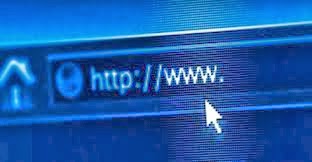As an internet “surfer” since its inception, I am familiar with many of the terms described in this chapter and thought it was an excellent review describing web sites, web pages, web servers, browsers, navigating recently viewed web pages, creating “favorite” subfolders, etc. However, I have to admit that I encountered some terms I never heard before and this lead me to think that right now it is probable that new terms are being created to describe additional functions currently in the developmental stages.

While I perform certain functions described in this chapter on a daily basis, I did not realize there were actual terms associated with them. One example is “tabbed browsing” which is the term used when multiple web pages are open in a single browser window. While at work or at home, I usually have numerous web pages open at the same time to assist me in whatever tasks I am performing.
This chapter taught me how to save a group of tabbed favorites in Internet Explorer and I plan to implement this knowledge immediately since I have numerous “favorite” subfolders which can be grouped according to how I use them with names such as “education”, “personal”, or “gardening”. This will be a definite time saver because now my web pages will now have some organization instead of being a long list of web pages saved to my favorite folders. Mozilla Firefox has a similar tool called “bookmarks”.
On any given day, my co-workers talk about breaking news stories on CNN and I wondered how they learned so quickly about what was happening elsewhere. According to
CCN RSS, they are subscribers to CNN's RSS (Really Simple Syndication) feeds and get breaking news delivered their desktops. What really interested me about the RSS feeds feature was how I could use it with respect to the blogs we all created so I could receive notifications when we entered new posts. After doing the exercise in our textbook to learn how to set up RSS feeds, I added feeds for all our blogs to learn firsthand how it works.
Other features available on the Internet which I plan to learn more about are: “web slices”, “accelerators”, “inprivate browsing” and “inprivate filtering”. What was interesting to me about this chapter is how it made me really look at the web pages and tool bars to learn what the icons represent and the various built-in shortcuts available for our use which saves us time when browsing the internet.
It’s funny how you don’t always see what is there to be seen and for me, this was especially true with this topic.
___________________________
REFERENCES:
CNN RSS. (2014). Retrieved from: http://www.cnn.com/services/rss/
Web Browsing Image. Retrieved from: http://lookwhatmomfound.com/2012/12/safe-surfing-a-guide-to-getting-your-kids-started-on-the-web.html
 Well, this is my last blog for this term. I have learned a great deal from this class and have tried to implement the new tools in my work, personal postings and with my friends. It's been an interesting class because it relates to what we are doing right now, and not at some distant time in the future when we forget what we learned because so much time has passed.
Well, this is my last blog for this term. I have learned a great deal from this class and have tried to implement the new tools in my work, personal postings and with my friends. It's been an interesting class because it relates to what we are doing right now, and not at some distant time in the future when we forget what we learned because so much time has passed.


















